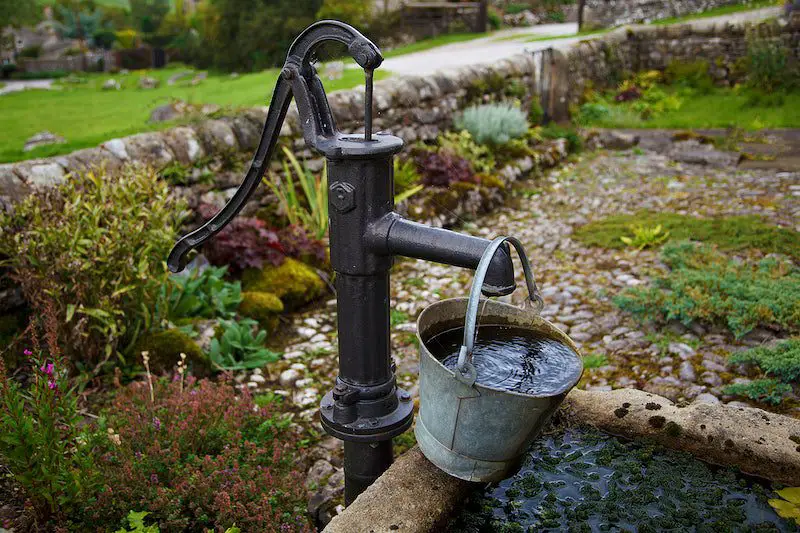A garden can be a peaceful retreat from the chaos of the everyday world. A well-placed water feature can make it even better. The sound of trickling water has a calming effect. This article will guide you through creating your DIY water features for a serene garden oasis.
Contents
Types of Water Features
A good water feature can make or break your garden’s aesthetic. Different water features offer various benefits, from their visual appeal to the sounds they produce. Below are seven water feature ideas you can add to your outdoor DIY projects for summer or other seasons.
Fountains
Fountains are popular water features for many garden owners. They add an elegant touch and work well in a variety of settings. Outdoor fountains come in different sizes, shapes, and designs.
One of the best things about fountains is the soothing sound of flowing water they provide. This sound can mask traffic noise, making your garden more peaceful.
What makes fountains great as water features is how you just need to place them rather than forming them from cement or clay. Many come as complete kits with pumps and tubing included. This makes it a good project for DIY beginners. Plus, they are easier to maintain than other water features like ponds or waterfalls. Regular cleaning and occasional pump maintenance will keep it running smoothly.
Fountain water features also attract wildlife. Birds come to bathe and drink, and you may even get visits from frogs or butterflies. A fountain can make your garden lively, charming, and relaxing. So, whether you have a big garden or a small patio, a fountain will likely fit your space and style.
Ponds
Pondwater features bring a whole new serenity and natural beauty to a garden. Unlike fountains, ponds offer a static water feature that can become a mini-ecosystem. You can add fish like koi or goldfish and aquatic plants. Waterfalls and spouts can also be added using a submersible pump.
Maintenance is a bit more involved with the pond water feature. You’ll need to monitor water quality, especially if you have fish. Plants may require pruning, and you’ll have to watch for algae. However, the effort is well worth it. A well-maintained pond can be a breathtaking focal point.
Pond water features also have a calming effect. There’s something deeply relaxing about watching fish swim or seeing sunlight play on the surface of thess water features. Plus, they offer educational value for kids, teaching them about ecosystems and nature. If you have the space and the time to maintain it, a pond can be a rewarding addition to your garden.
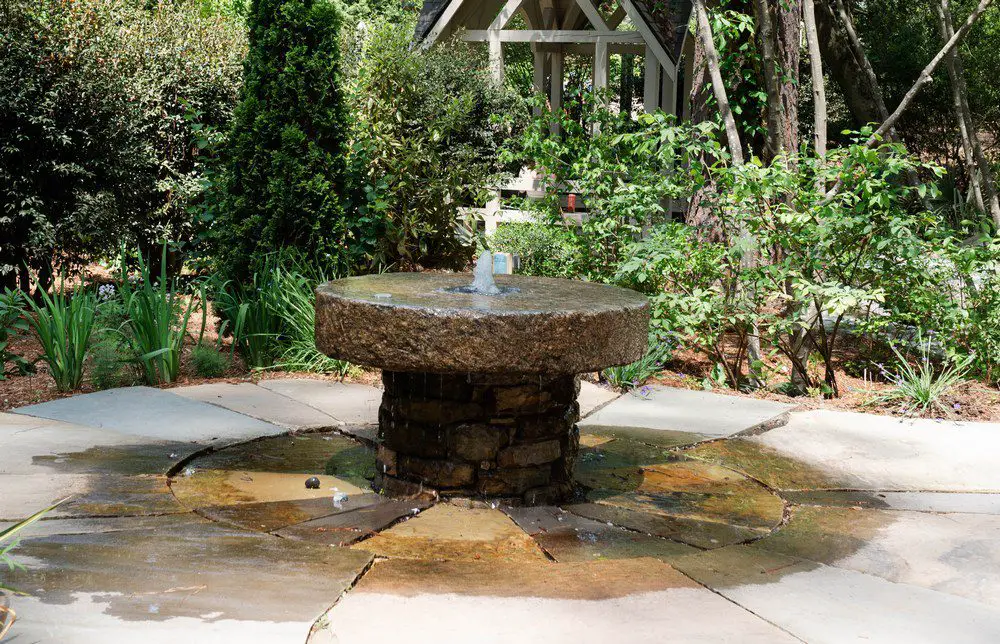
Waterfalls
Waterfall water features offer a dynamic and visually stunning decoration for any garden. They add a sense of movement and drama that other water features can’t match. The cascading water produces a soothing sound that’s louder and more textured than what you get from a fountain or pond water features. It makes waterfalls excellent for drowning out background noise.
Building a waterfall requires more work and skill than other types. You’ll need to plan carefully to ensure proper water flow and safety. They often require pumps that are more powerful, as well as additional materials like rocks and a pond liner. But once set up, they are surprisingly easy to maintain.
Waterfalls can be a part of a pond or standalone water features. They attract wildlife and enhance the natural beauty of your garden. They’re great for people who want something more ambitious and are willing to put in the extra effort. A well-designed waterfall can turn any garden into a breathtaking outdoor retreat.
Stream Beds
Stream bed water features offer a unique and natural-looking decoration. They mimic the look and feel of a babbling brook, adding a rustic touch to your garden. Stream beds create a gentle, flowing sound different from the splash of fountains or waterfalls. This can make your garden feel like a tranquil countryside setting.
Building stream bed water features takes careful planning. You’ll need to dig a channel, install a liner, and place rocks or pebbles for a natural look. A pump will keep the water flowing from one end to the other. The good news is that stream beds are easy to maintain once installed. Just keep the pump clean and remove any debris that collects.
Stream beds attract birds and small animals looking for a drink. They can also be an educational feature for kids learning about river ecosystems. If you’re looking for a water feature that’s both soothing and natural, a streambed might be the perfect choice.
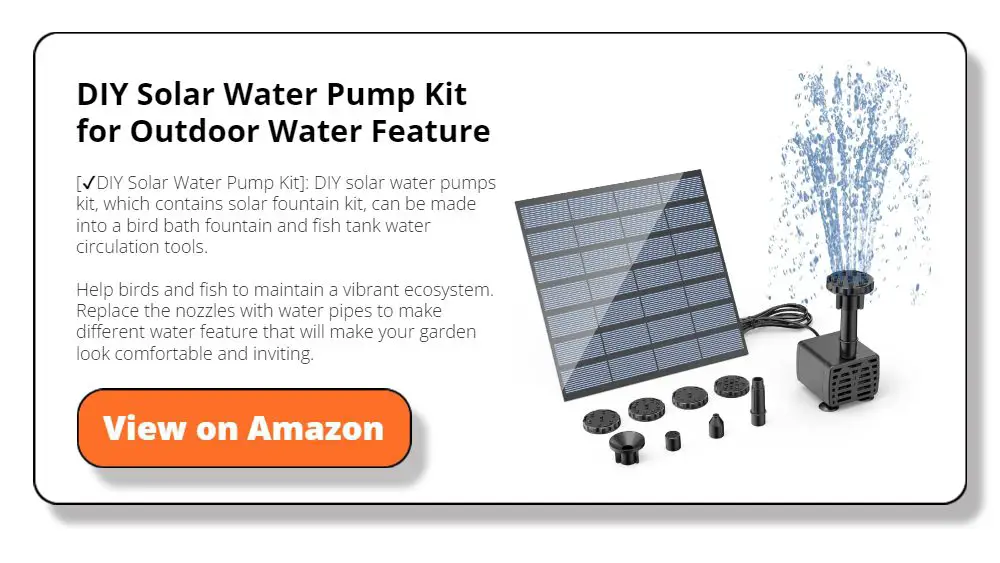
Wall Water Features
Wall water features are ideal for gardens or patios with limited space. They attach to a wall, freeing up valuable floor area. These features come in various styles, from sleek, modern designs to more traditional, stone-like appearances. The sound of water flowing down the wall can be incredibly relaxing, turning an ordinary wall into a point of interest.
Installation can be more complex, especially if electrical work is needed for the pump. However, many kits are available that make the process easier. Maintenance mainly involves cleaning the surface to prevent algae build-up and ensuring the pump stays in good condition.
Wall water features can be a focal point or blend seamlessly into the background. They’re perfect for creating an oasis in a small garden or even a balcony. If you’re short on space but still want the benefits of a water feature, consider adding a wall water feature to your outdoor area.
Container Water Gardens
Container water gardens are the ultimate solution for those with limited outdoor space. These miniature water features can fit on a deck, patio, or even a balcony. Despite their small size, they pack a visual punch. You can include aquatic plants and even small fish like guppies or minnows.
Setting up a container water garden is simple. You’ll need a watertight container, some aquatic plants, and a small pump to keep the water oxygenated. Maintenance is minimal, involving occasional water changes and plant care.
Container water gardens offer the joys of a water feature without the commitment of a larger installation. They’re great for apartment dwellers or anyone who wants to start small. Plus, they’re portable, so you can take your little piece of paradise with you if you move.
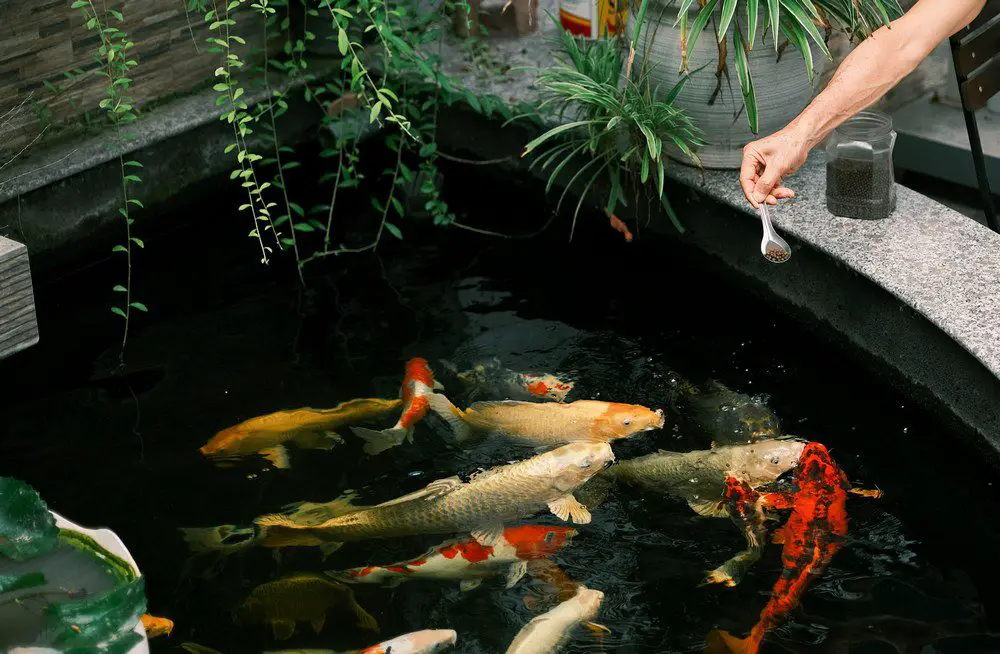
Building Steps
Creating water features can be a rewarding project. It takes careful planning, the right materials, and a bit of elbow grease. This section will explain the key steps to help you build your water feature. Follow these headings to guide you from start to finish.
Decide on the Type and Size
Choosing the type and size of different water features is a critical first step. This decision will shape the rest of your project, affecting everything from cost to maintenance. Start by thinking about your garden’s overall design.
Do you want water features with a natural look? A stream bed or pond might be best. Looking for something more sculptural? A fountain or wall feature could be the way to go.
Next, consider the size of your garden. Larger features like ponds and waterfalls require more space and are generally higher in cost and maintenance.
Smaller gardens may benefit from wall water features or container water gardens, which take up less room but can be just as impactful. Also, remember to consider depth if you plan to add fish or plants.
Finally, consider your DIY skill level. Some water features are easier to build than others. For example, container water gardens and simple fountains are generally good starting points for beginners.
More complex features like ponds and waterfalls may require advanced skills or even professional help. Consider all these factors, and you’ll be well on your way to picking the perfect type and size for your water feature.
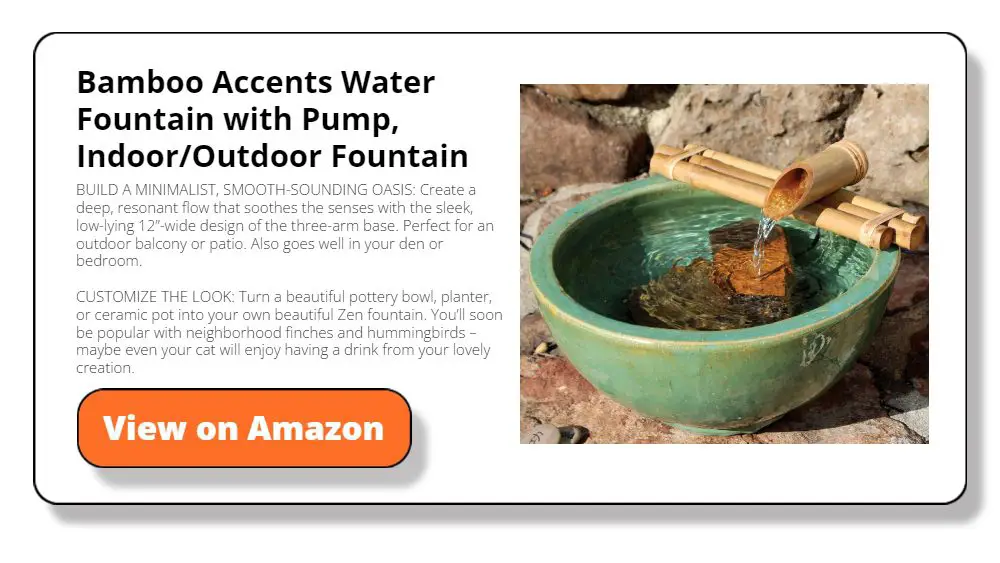
Pick the Location
Selecting the right location for your water features is just as crucial as choosing the type and size. You’ll want to consider several factors. First, think about sunlight. Too much direct sunlight can cause algae to grow, especially in ponds. Some shade is generally a good idea.
Next, consider the water source. You’ll need to refill or top off your water feature occasionally. Make sure it’s convenient to a water source like a hose.
Drainage is another important factor for water features. If you’re installing a fountain or waterfall, you’ll need an area where water can drain without causing issues.
Finally, consider how water features will fit your garden’s overall design. Will it be a focal point or more of an accent? Make sure the location complements other elements in your garden, like plants, paths, or seating areas. Choosing the right spot will ensure that your water feature enhances your outdoor space rather than detracts from it.
Gather Materials and Tools
Once you’ve decided on the type and location, it’s time to gather your materials and tools. The exact list will vary depending on what kind of water feature you’re building. Typical materials include a pump, tubing, a water reservoir like a pond liner or basin, and decorative elements like rocks or plants. You may also need the base and foundation construction materials like sand, concrete, or gravel.
For tools, expect a shovel, measuring tape, and level. More complex projects might require power tools like a drill or saw. Safety gear like gloves and goggles is always a good idea.
Before starting, make a detailed list and check it twice. You don’t want to halt progress because you’re missing something crucial. Some people find it helpful to lay out all their materials and tools in advance so everything is within easy reach. Being organized from the start will make the building smoother and more enjoyable.
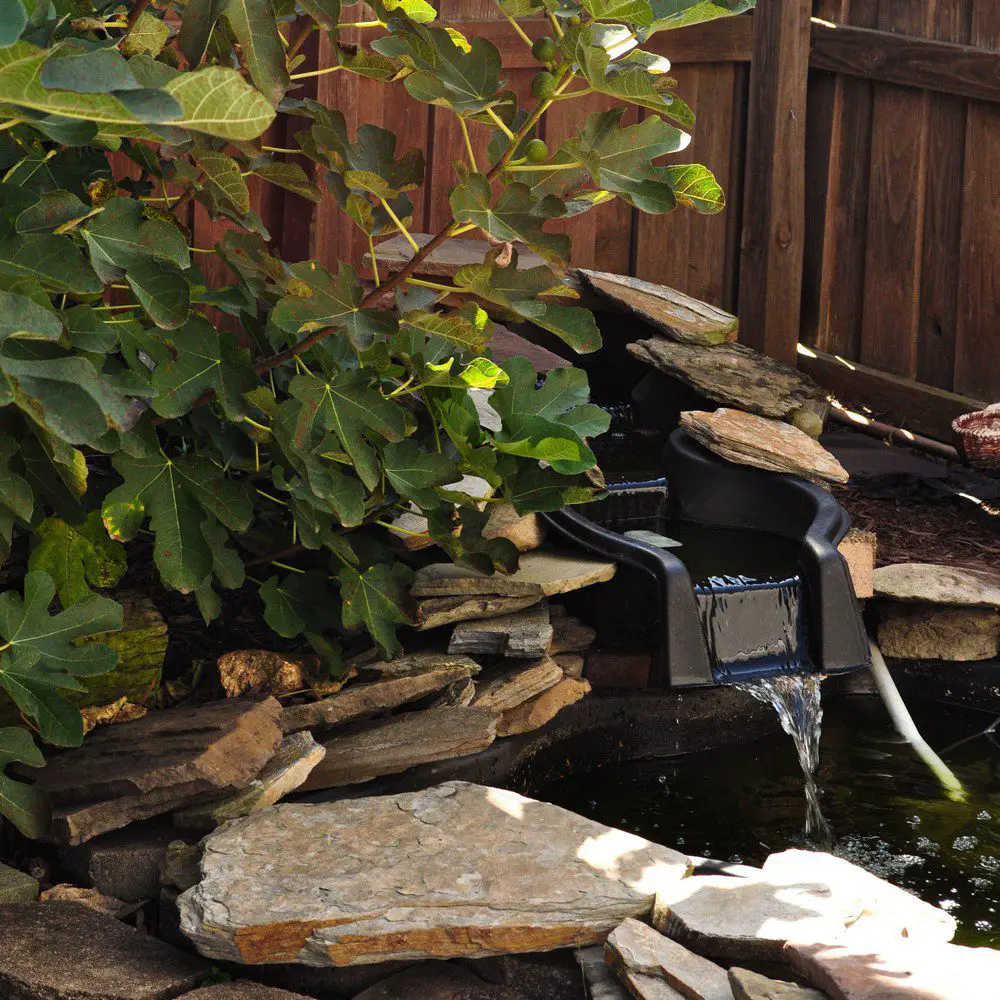
Prepare the Site
Getting your site ready is an essential step before you start building. This preparation can vary depending on the type of water feature you’re installing. This might be as simple as leveling a small patch of ground for fountains and container water gardens. You may need to dig a hole or channel for ponds or stream beds.
First, clear the area of any debris like rocks, roots, or weeds. Then, mark the outline of your water feature using stakes or spray paint. It gives you a visual guide to work with. If your project involves digging, carefully remove soil within your marked area. For water features requiring depth, like ponds, ensure the hole is evenly dug to prevent future issues.
While preparing the site, keep in mind the needs of your water feature. For example, if your project requires electrical access, ensure an outlet is within a safe distance. By the end of this phase, your site should be clear, level, and ready for the next steps.
Install the Foundation
A sturdy foundation is key for the longevity and safety of your water feature. The type of foundation you need depends on your chosen water feature. A pond liner is usually necessary for ponds and stream beds to hold the water. You may also need to add a layer of sand or cushioning material under the liner for extra protection.
A concrete foundation might be required to hold the weight and ensure stability if you’re building a fountain or wall feature. It usually means pouring a concrete slab and allowing it to cure. Ensure the foundation is level; an uneven base can cause your water feature to be unstable and affect the water flow.
Regardless of the type, always follow specific guidelines or instructions for your chosen water feature. A strong, level foundation is crucial for avoiding problems down the line, so take your time and do it right.
Set Up the Pump and Plumbing
The pump and plumbing are what bring your water feature to life. These components circulate the water, creating that soothing flow or ripple. Start by reading the pump’s instruction manual. Make sure you understand its capabilities and limitations.
Choose a pump appropriate for the size and type of your water feature. Too small a pump won’t circulate enough water, while too large a pump can cause splashing and waste energy. You also want to ensure your pump comes from a trusted brand like VIVOSUN for various features. Their submersible pump has a flow rate of GPH and does not produce as much noise as other pumps.
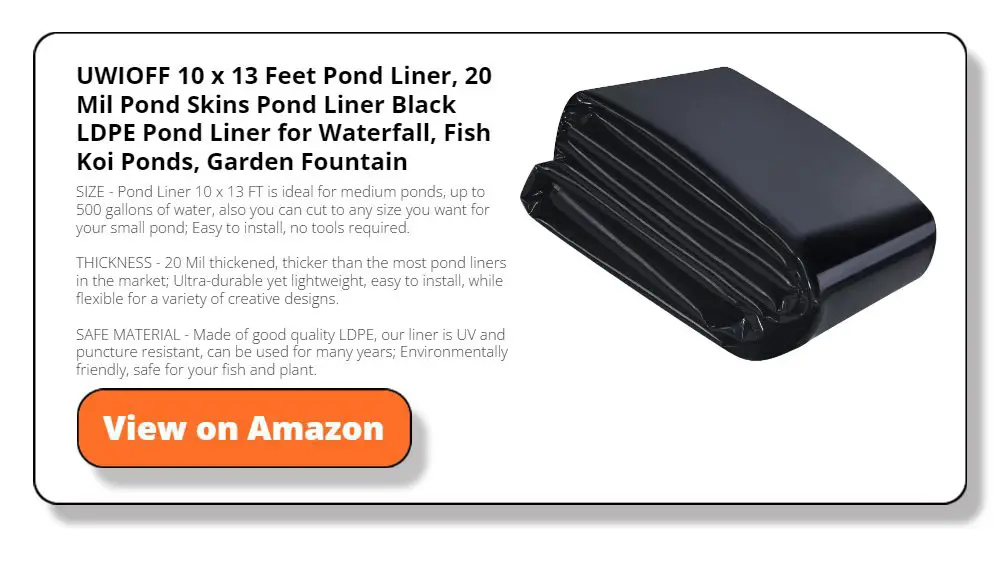
Next, lay out the plumbing. For most water features, it involves flexible tubing that connects the pump to the water source. If your feature has multiple tiers or elements, you may need a more complex setup with additional tubing or valves.
Secure all connections tightly to prevent leaks. It’s often a good idea to run a quick test before moving on. Fill the reservoir with water and turn on the pump to ensure everything works correctly. If you encounter issues, this is the time to troubleshoot. Once your pump and plumbing are installed, you can move on to the finishing touches.
Add Finishing Touches
Now that the basics are in place, it’s time for the fun part—adding the finishing touches. It is where you can let your creativity shine. For ponds, consider adding aquatic plants like lilies or reeds. These not only look beautiful but also help maintain water quality. Fountains can be adorned with decorative stones or sculptures to match the garden’s aesthetic.
You might also think about lighting. Subtle underwater lights can make your water feature stand out, especially in the evening. Always choose outdoor-approved, waterproof lighting and take proper safety precautions during installation.
These finishing touches don’t just add visual appeal. They can also affect how the water flows and sounds. For example, adding rocks at the base of a waterfall can change the water’s sound from a single splash to a series of smaller, gentler sounds. Experiment until you find the look and sound that you love.
Test the Water Feature
Before you declare your project complete, it’s crucial to test everything. Fill your water feature to the appropriate level and turn on the pump. Let it run for a bit to see how everything looks and sounds. Ensure the water is flowing as expected and there are no leaks or issues with electrical components.
Listen to the water flow. Is it the peaceful sound you were hoping for, or is it more of a distracting noise? Pay attention to any splashing; excessive splashing can waste water and create a mess over time. Testing helps ensure that all your hard work pays off in a water feature that functions well and adds beauty to your garden.
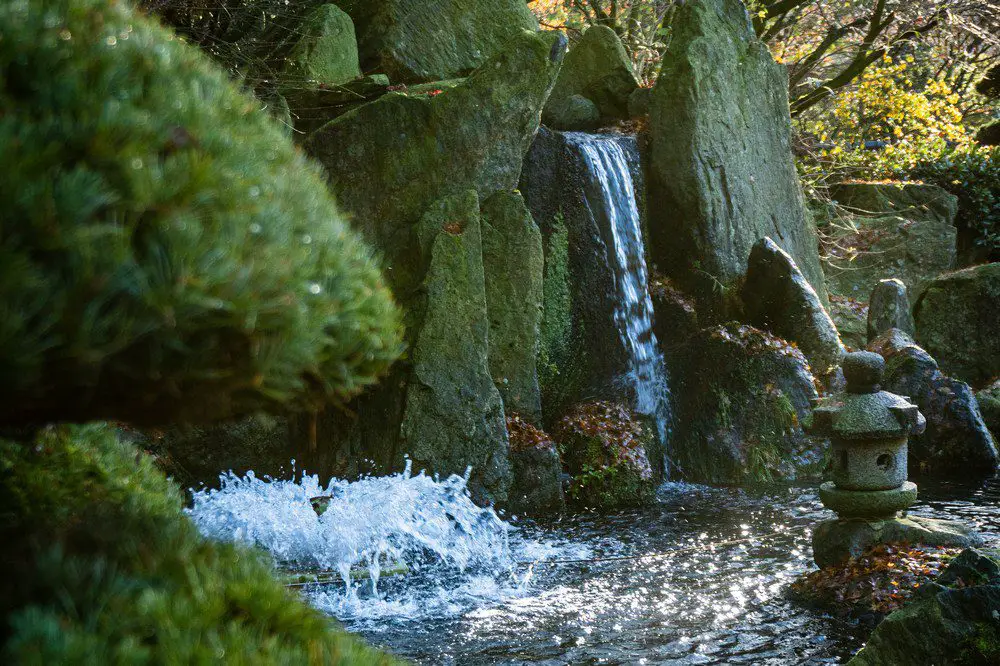
Make Adjustments
Even with thorough planning and careful building, you may find that your water feature needs some tweaks. Perhaps the water isn’t flowing as you envisioned, or the sound is louder or softer than you’d like. Now is the time to make adjustments.
It could be as simple as rearranging some rocks to change the water flow or as involved as adjusting the pump settings. If you’ve added plants or fish, monitor their health and make any needed environmental changes.
Don’t rush this step. Fine-tuning your water feature can make the difference between liking and loving it. Once you’ve made adjustments, run another test to ensure you’re happy with the results. Then, you can finally sit back and enjoy the new oasis you’ve created in your garden.
Maintenance
Maintaining your water feature is essential for its longevity and beauty. Regular care keeps the water clean, the pump running smoothly, and the plants and fish healthy. This section will guide you through some key aspects of water feature maintenance.
Keep the Water Clean
One of the most important tasks is keeping the water clean. Algae build-up is a common issue, especially in features that get a lot of sunlight. You can combat this by adding aquatic plants that use the nutrients algae feed on. Special algae treatments are also available. If you have a pond with fish, make sure to check the pH levels and adjust them as necessary regularly.
Pump and Filter Maintenance
The pump is the heart of your water feature, so regular maintenance is crucial. Turn off the pump and disconnect it from the power source before you start. Open the pump case and remove any debris, like leaves or twigs, that could impede its function. Check the filter, too; a clogged filter will reduce water flow and can burn out your pump.
Seasonal Care
Water features require different care depending on the season. In autumn, fallen leaves can clog your pump and decompose in the water, causing issues.
Use a net to remove leaves and debris regularly. In winter, you may need to take extra steps to protect your water feature from freezing temperatures. It could mean removing the pump and storing it indoors or adding a pond heater to keep the water from freezing.
Look After Plants and Fish
If your water feature includes plants or fish, they also need attention. Prune back aquatic plants to keep them from taking over the water space. Keep an eye on your fish for any signs of illness and feed them appropriately.
Electrical Safety
Ensure that your water feature’s electrical components are in good working order. Regularly check cords for signs of wear and tear and ensure all connections are secure. It may be best to consult a professional if unsure about something.
Regular maintenance is the key to a beautiful, long-lasting water feature. With a little time and effort, you can ensure your garden oasis stays in top shape for years.
Budget Tips
Building and maintaining a water feature can be a rewarding experience, but costs can add up. Thankfully, there are ways to create a stunning water feature without breaking the bank. This section offers valuable budget tips to help you save money while achieving the garden oasis of your dreams.
Choose Cost-Effective Materials
One way to save is by choosing affordable materials. For example, plastic or rubber pond liners are generally cheaper than concrete. Similarly, a simple submersible pump can be more cost-effective than a top-of-the-line model. While it’s important not to skimp on quality, you can often find cheaper options that still meet your needs.
Do It Yourself
Labor costs can be a significant part of any project. By doing the work yourself, you can save a substantial amount. Many water features like fountains and container water gardens are manageable DIY projects. However, be realistic about your skills and time commitment; some projects, like large ponds, may require professional help.
Recycle and Upcycle
Think creatively and consider using recycled materials. An old bathtub or sink can become a unique pond, while a discarded wooden barrel can make a charming container water garden. Local resale shops or online marketplaces are great places to find second-hand items that can be repurposed.
Plan and Prioritize
A well-thought-out plan can save you money in the long run. Prioritize the elements most important for your water feature and what can wait. For instance, you might start with a basic pond and add a waterfall or lighting later. It allows you to spread out costs over time.
Shop Sales and Discounts
Keep an eye out for sales at garden centers and hardware stores. Seasonal sales, clearance items, and bulk purchase discounts can offer significant savings. Online stores often have deals, but make sure to factor in shipping costs.
Opt for Low-Maintenance Features
Finally, consider long-term maintenance costs. Features like container water gardens and wall features typically require less upkeep than larger ponds, saving you money over time. Choose plants that are easy to care for and consider self-cleaning options like pond skimmers to reduce maintenance time and expense.
Creating a water feature doesn’t have to be a budget-buster. With smart planning, savvy shopping, and creativity, you can build a beautiful oasis without emptying your wallet.
Safety Considerations
Creating a serene water feature is a wonderful goal, but it’s also essential to consider safety. Safety measures can prevent accidents during and after the building process and keep everyone who enjoys the water feature out of harm’s way. This section offers guidance on prioritizing safety while building and maintaining your garden oasis.
Electrical Safety
Pumps, lights, and other electrical components make electrical safety crucial. Always use waterproof connectors and outdoor-rated extension cords. Ensure that all electrical outlets are protected by a ground-fault circuit interrupter (GFCI) to reduce the risk of electric shock. If you’re not confident in your electrical skills, hire a qualified electrician to do the installation.
Child and Pet Safety
Water features can attract the attention of children and pets, sometimes putting them at risk. Fences or barriers around deeper water features like ponds can prevent accidental falls. Always supervise young children and pets near the water, and consider installing safety features like netting or grates over the water surface.
Water Quality
Stagnant or dirty water can become a breeding ground for harmful bacteria. Keep your water clean to reduce risks to humans and aquatic life in your feature. Use appropriate algae and bacteria treatments, and follow all instructions and safety warnings on product labels.
Slip and Fall Hazards
The area around your water feature can become slippery, especially if it’s a splashy fountain or waterfall. Use slip-resistant materials for any decking or paths leading to your feature. Regularly clean the area to remove algae or moss that can make surfaces slippery.
Chemical Safety
If you treat your water features with chemicals to control algae or improve water clarity, handle them carefully. Store chemicals securely, and keep them away from children and pets. Always read and follow label instructions for proper usage and disposal.
Considering these safety considerations, you can enjoy your water feature with peace of mind. Proper planning and vigilant maintenance can go a long way in ensuring that your garden oasis is a safe and enjoyable space for everyone.
Conclusion
Outdoor water features can transform any garden into a tranquil oasis. From the sound of cascading waterfalls to the peaceful allure of a koi pond, these additions bring life and serenity to your outdoor space.
Proper planning, safe installation, budget awareness, and ongoing maintenance are all key factors in creating a long-lasting, beautiful water feature.

